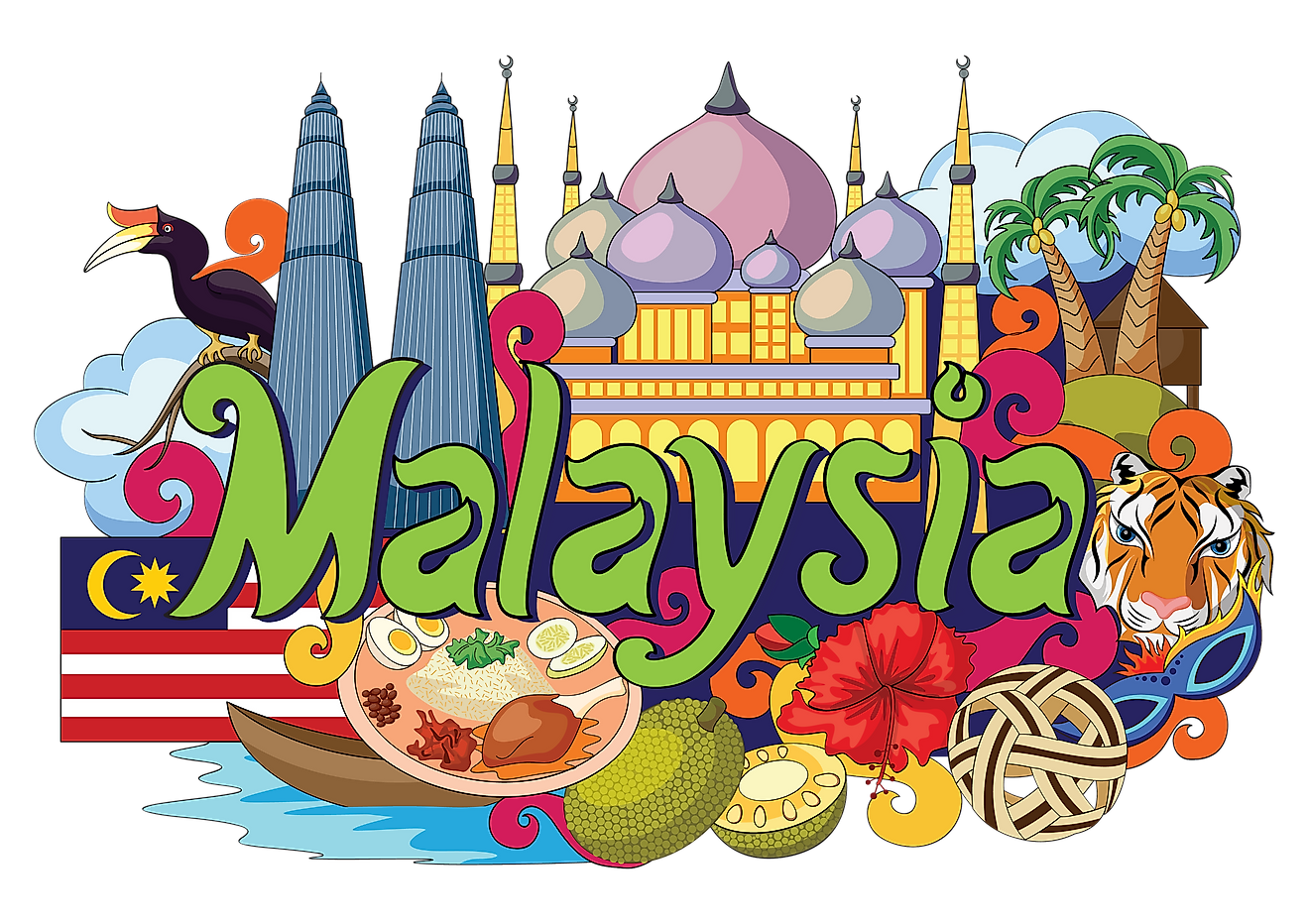The Southeast Asian country of Malaysia has great cultural diversity. Indigenous tribes, Malays, Chinese, and Indians have all contributed to the culture of the country. Significant influences of Persian, British, and Arabic cultures are also be seen in Malaysian culture.
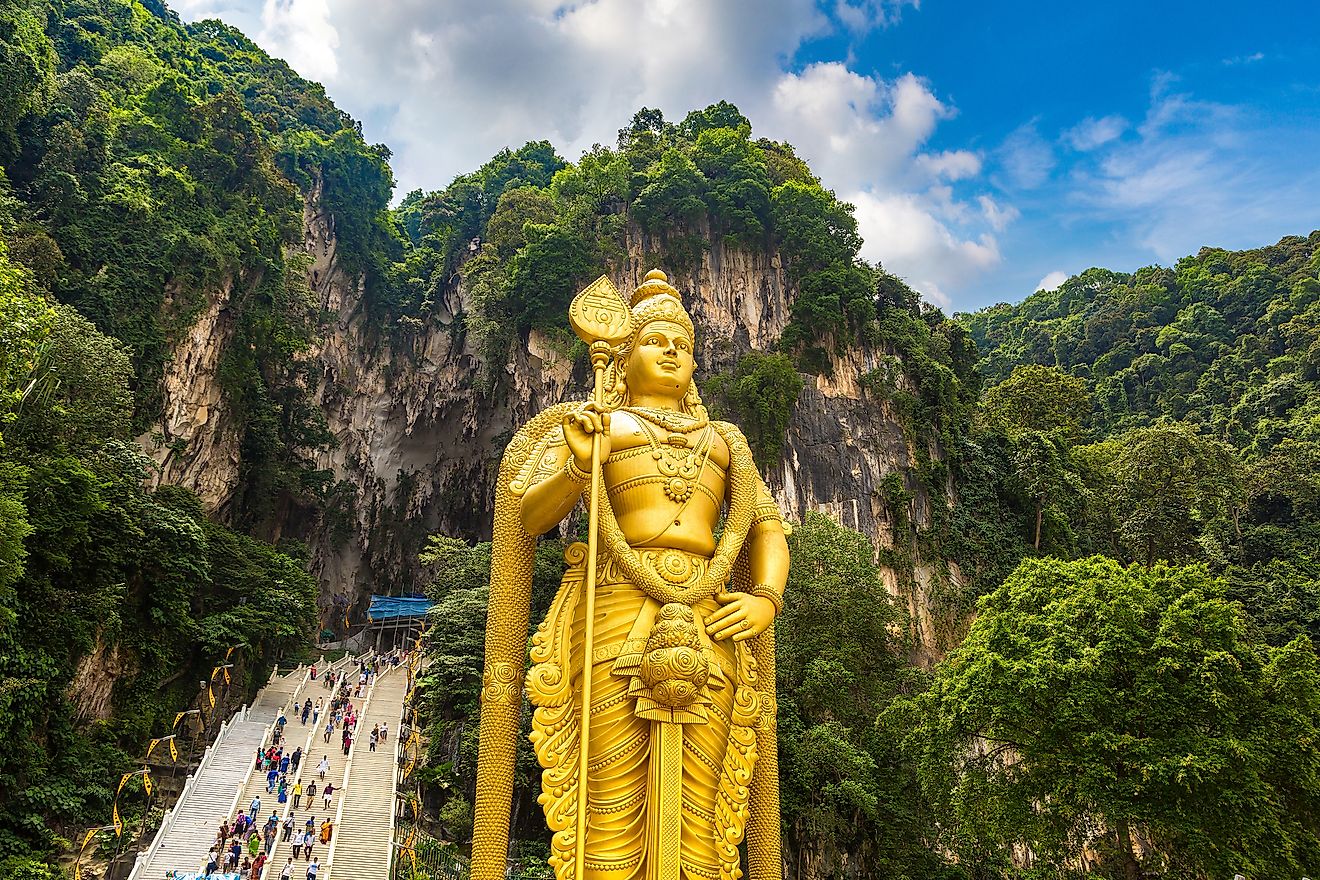
Malaysia has a large population of around 31,809,660 individuals. The ethnic Malays and indigenous peoples of the country together represent around 61.7% of the population. Malaysian citizens of Chinese and Indian ethnic origins also have a considerable presence in Malaysia. A significant section (10.4%) of Malaysia’s population comprises of immigrant workers from various foreign countries.
Malaysia is linguistically diverse. The country has 112 indigenous and 22 foreign languages. Malay is the official language of the nation while English is the most widely spoken second language of the people. Chinese, Tamil, Telugu, Punjabi, Thai, and other languages are spoken.
The majority of Malaysia’s population (about 61%) are affiliated to Islam. Followers of Buddhism, Christianity, and Hinduism account for 19.8%, 9.2%, and 6.3% of the country’s population respectively. Other religions like Taoism, Confucianism, etc., also have significant followings.
The religious diversity of Malaysia leads to the celebration of many festivals in the country all year round. Secular festivals like Hari Merdeka or Independence Day, Labour Day, Malaysia Day are also held with great festivities. Muslim holidays like Hari Raya Puasa, Maulidur Rasul, and Islamic New Year or Awal Muharram are very prominent. Chinese New Year, the Hindu festival of Diwali, Thaipusam, and Wesak are some of the other popular celebrations in Malaysia.
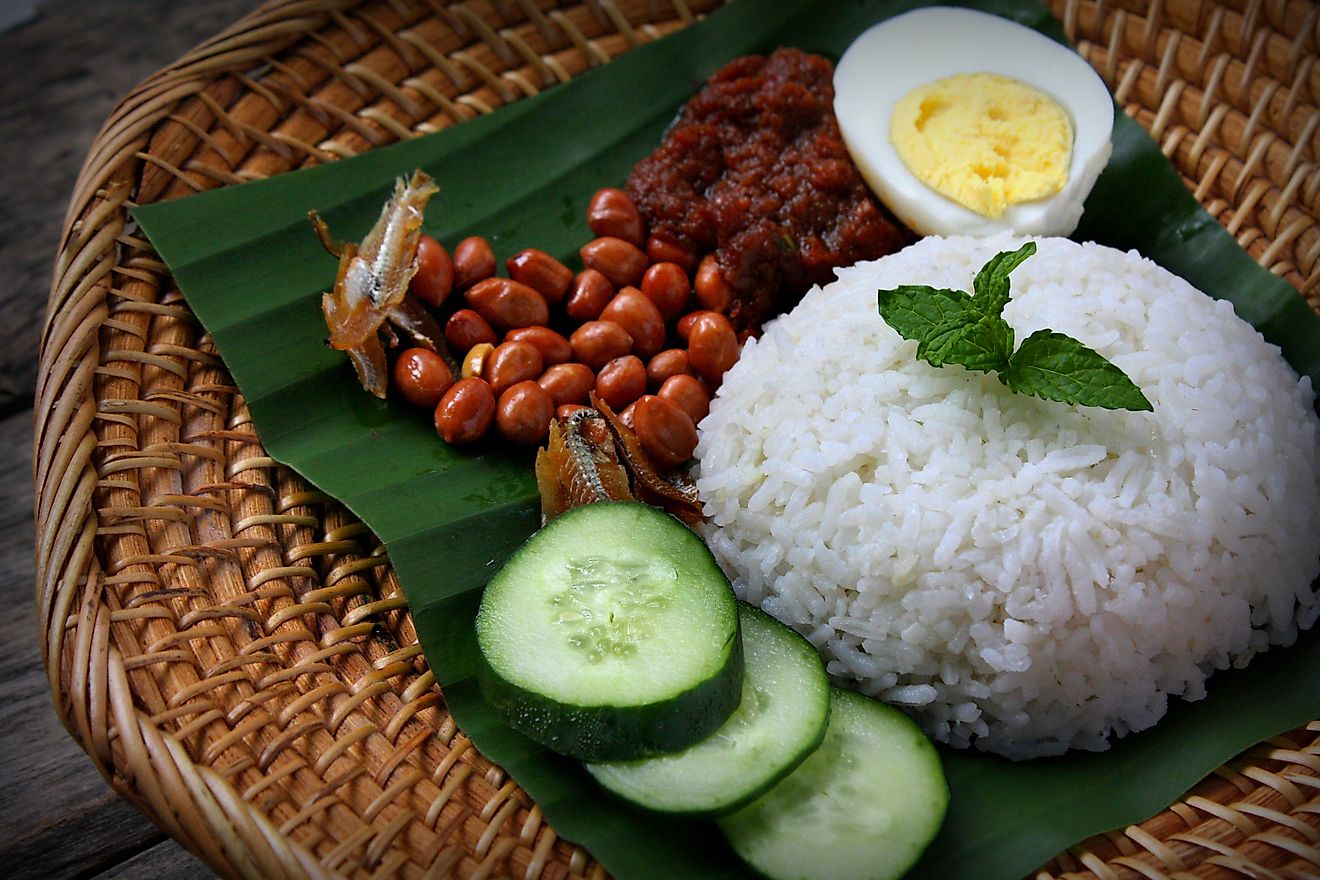
The multiethnic makeup of Malaysia’s population significantly influences the country’s cuisine. Indian, Thai, Sumatran, Malay, Chinese, Javanese and other cuisines have all helped shape the Malaysian dishes. The cuisine of the country also varies regionally.
Rice is the staple food in Malaysia. The country grows nearly 70% of the rice that it consumes and the rest is imported. Chilli peppers are an essential ingredient in every Malaysian kitchen. A shrimp paste called belacan is also widely used to add flavor to various dishes. Coconut is also an important ingredient in Malaysian cuisine. Virtually all parts of the coconut plant are used for culinary purposes. Different varieties of soy sauce are also added to Malaysian dishes to contribute a salty flavor to the steamed dishes, stir-fries, and marinades. Lemongrass herb is used in many dishes. Tofu dishes are also made.
A variety of meats like beef, poultry, and mutton are consumed in the country and all are handled as per Halal standards. Malaysian Muslims abstain from consuming pork but a large section of the Chinese community living in Malaysia prefer pork. Fish is prominent in the Malaysian diet. Seafood other than fish like shrimp, prawn, squid, octopus, sea cucumber, snails, etc., are also consumed. A wide variety of fruits and vegetables are also available in the market.
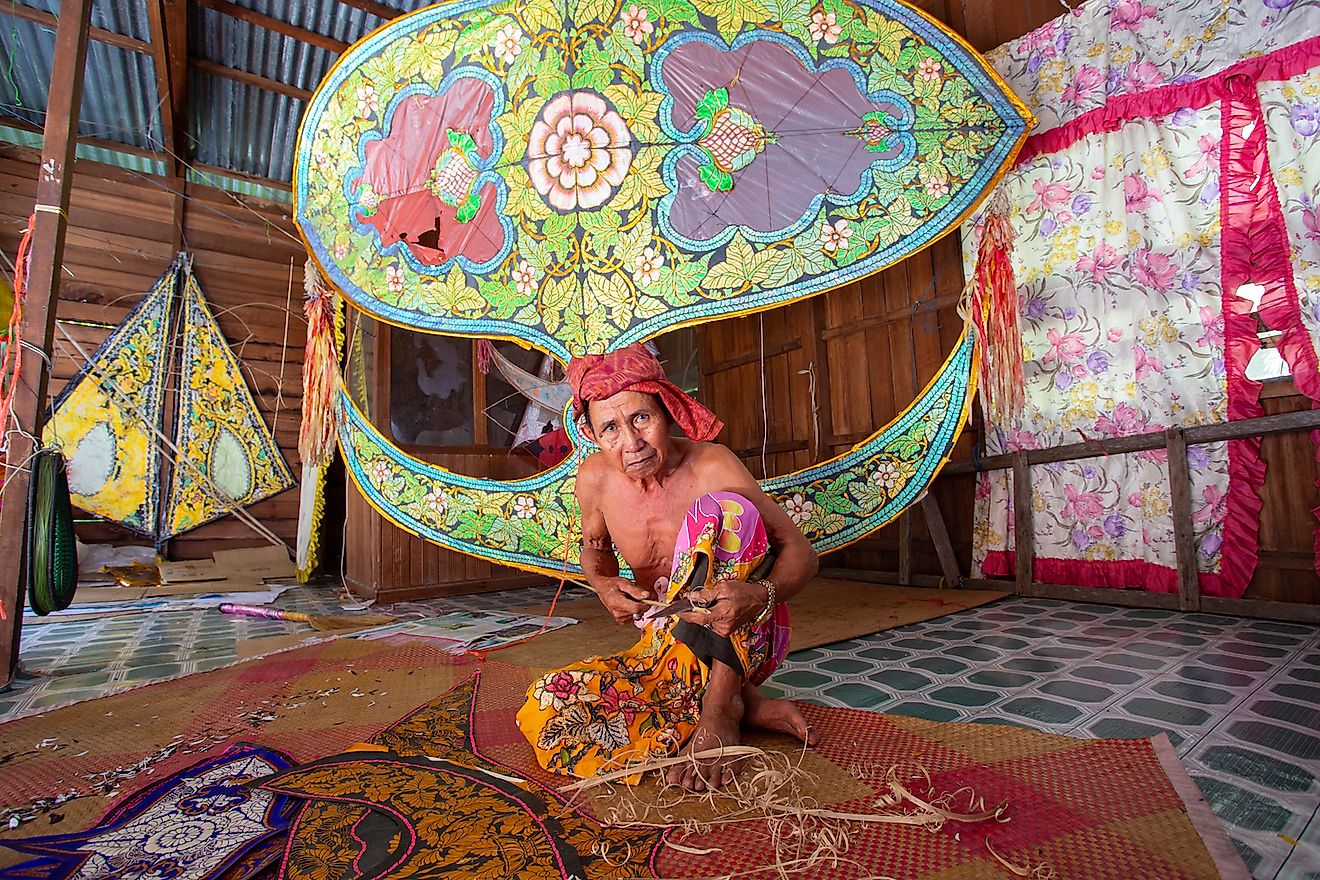
The earliest works of Malaysian literature were transmitted orally. It encompassed many genres ranging from folk tales, legends, and myths to poetry, history, proverbs, epics, and love stories. Written literature developed much later and is mostly in the four languages of Malay, English, Tamil, and Chinese. The earliest literary works in the country were in the Arabic script.
Malaysian has a rich heritage of art and craft. Weaving, carving, and silversmithing have long traditions in the country. Handwoven baskets, woven batik, songket (luxurious textiles), kris, wooden masks, beetle nut sets, etc., are some common Malaysian artworks. Earthenware has developed in areas like Perak.
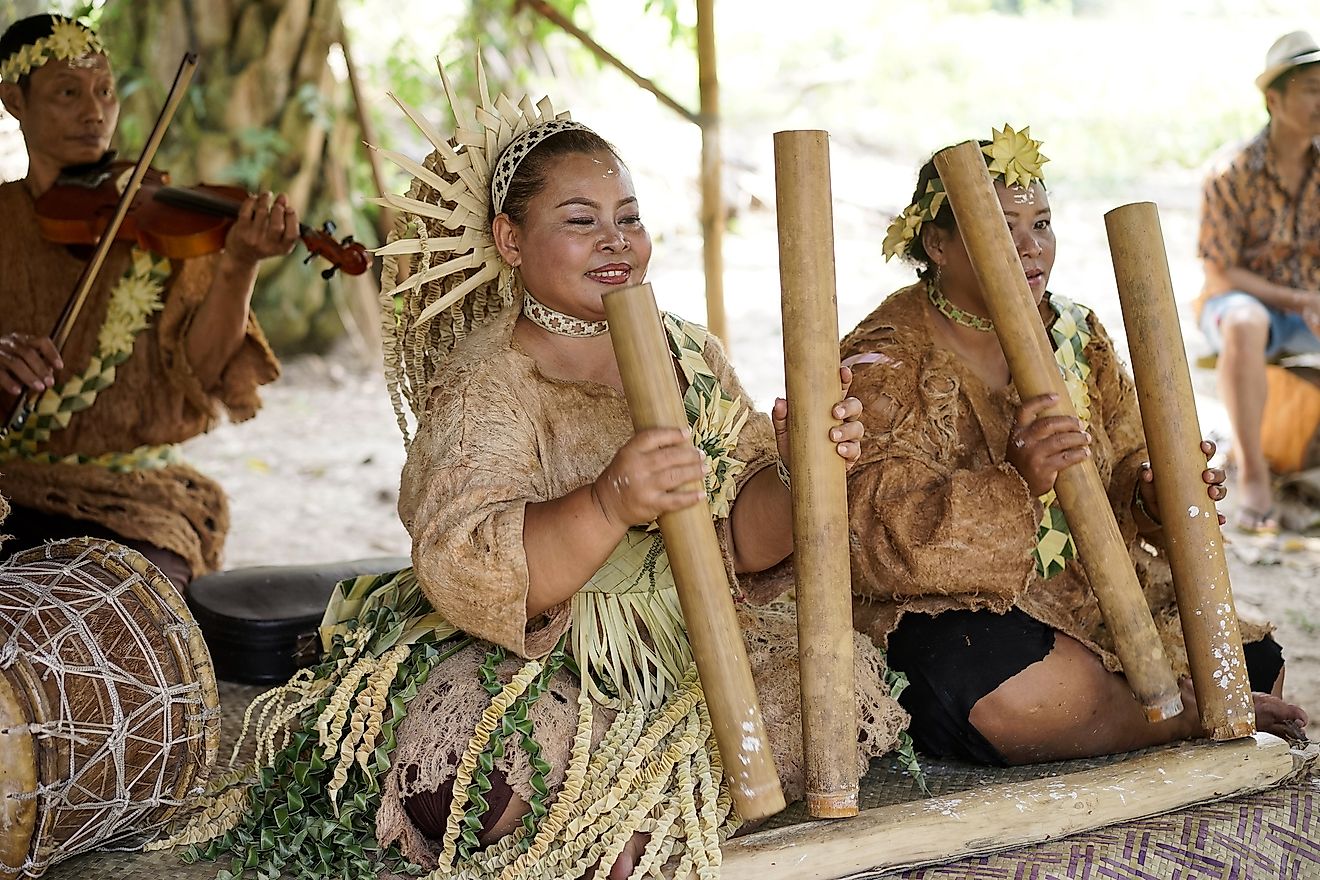
The music of Malaysia has several origins. The country’s traditional music is based on percussion instruments. Drums are the most important musical instruments used to play this type of music. At least 14 types of drums are used. Other traditional musical instruments include rebab, gongs, trumpets, flutes, etc. Music is an integral part of weddings, birth ceremonies, harvest festivals, and storytelling events.
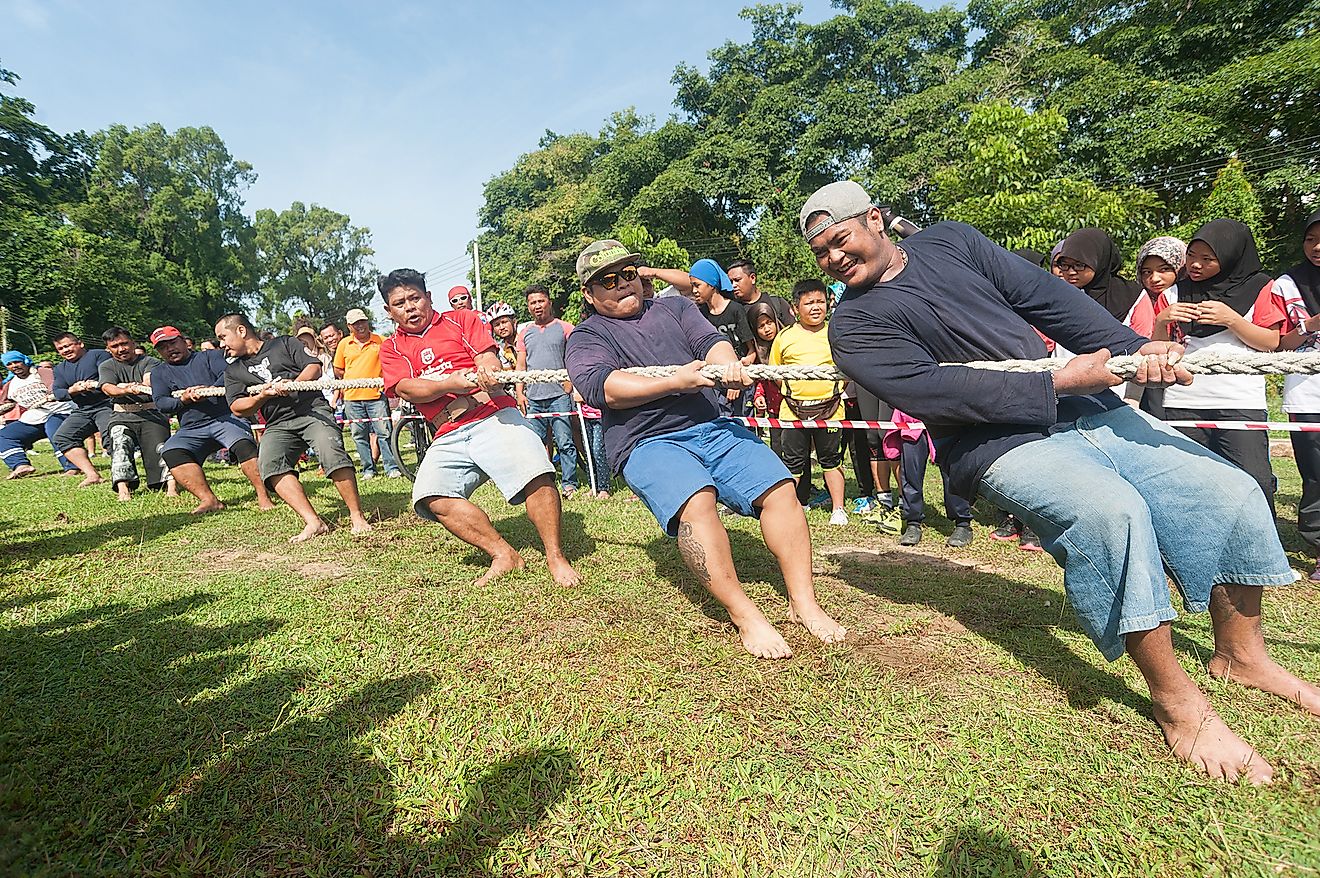
A number of sports are played in Malaysia with the most popular ones being bowling, football, badminton, squash, field hockey, etc. Wau is a traditional Malaysian sport that involves kite flying. The kites used in this game can fly as high as 500 meters with the help of bamboo attachments. Sepak takraw or kick volleyball, dragon dancing, and dragon boat racing are some other traditional sports. With long coastlines and many islands, many aquatic sports and activities like sailing, swimming, scuba diving, snorkeling, etc., are enjoyed by Malaysians.
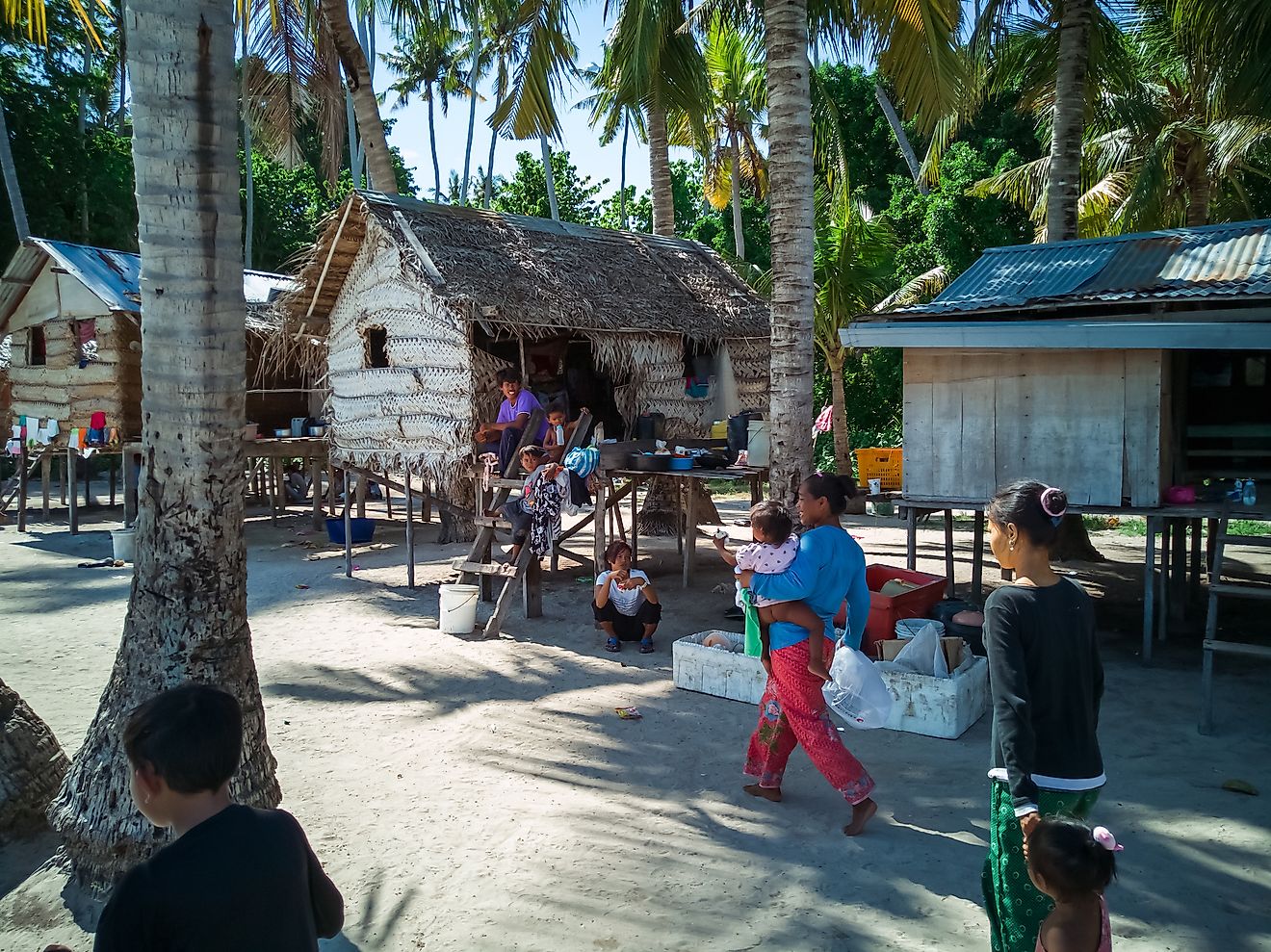
Although men dominated the traditional Malaysian society, strict gender segregation is not a feature of modern Malaysia. With every passing decade, more and more women of the country are entering the workforce. While women have always participated in agricultural activities, modern Malaysian women are employed in diverse fields of employment ranging from academics to healthcare, information technology, factories, business, etc. Cooking, cleaning, and child-rearing are, however, still deemed to the sole responsibility of women in many households. In affluent households, these duties are often assigned to hired foreign maids.
Marriage customs in Malaysia are varied due to the country’s ethnic diversity. All religious communities with the exception of Muslims have no restrictions on their marriage. Malaysian Muslims who marry non-Muslims risk government sanctions. If, however, their non-Muslim partner converts to Islam, there is no such risk. Different ethnic communities in the country have their unique marriage rituals and customs. For example, Malay weddings are associated with large banquets and involve eating rice prepared in oil while Indian weddings are elaborate affairs that continue over several days. People usually marry before reaching their 30s but the average age of marriage is gradually shifting towards the higher side.
Household size in Malaysia has considerably reduced over the years. In urban areas, most households are small and consist of parents and their children. In rural areas, extended families can still be seen. Malaysian children are adored and brought up with considerable care. Grandparents often participate in child rearing in the early years. Children are taught to respect their elders, address people with proper titles, and other social etiquettes. Their education is highly valued by the parents.






